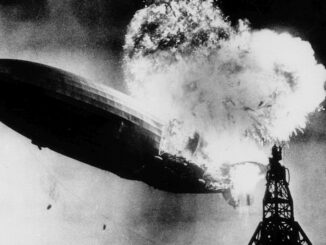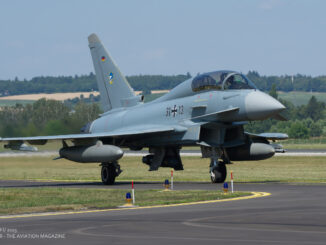 Almost sixty years ago, Transall C-160 transport aircraft took-off for its maiden flight. Officially introduced in 1967, the Franco-German airlifter is currently approaching the end its active duty. And that creates a good opportunity to take a closer look at this aeroplane and an interesting history of its development and operational service.
Almost sixty years ago, Transall C-160 transport aircraft took-off for its maiden flight. Officially introduced in 1967, the Franco-German airlifter is currently approaching the end its active duty. And that creates a good opportunity to take a closer look at this aeroplane and an interesting history of its development and operational service.
In order to understand the reasons that led to creation of the Franco-German transport aircraft, one must go back as early as the second half of the forties. Then, shortly after the World War II, many European countries were either re-creating or modernizing their air forces, adopting them to the new, post-war reality.
One of them was France, recovering from years of German occupation that also included rebuilding of its air force. Although the world war was over, the country still remained a colonial power with several military engagements in Indochina and North Africa – which, inter alia, required a modern and reliable transport aviation, able to support French troops in the colonies.
At that time, the French Air Force was operating two types of airlifters, however both were representing a classic design from the 1930s. It was A.A.C. 1 Toucan, being nothing more than a post-war manufactured variant of ´Tante Ju´ (a German-designed tri-motor transport aircraft Junkers Ju 52) and a number of Douglas C-47 aeroplanes, received from the US surplus. Although Ju 52 and ´Dakota´ were a real workhorses during the war years, they were by no means modern in the second part of the 1940s, having an insufficient size/load factor if comparing to newer aircraft.
And that was a reason why, already in 1947, the French authorities launched a design competition for a new military transport aircraft. It soon resulted with an interesting, modern aeroplane, designated as Nord 2500. On 10th September 1949, the new French airlifter made its maiden flight.
After a few years of further development and use of a new, more powerful engines, the aircraft was eventually introduced in 1953, as Nord 2501 Noratlas. Although it entered service too late to participate in the Indochina War, the Noratlas was operationally used during the Algerian War (1951 – 1962), the Suez Canal crisis (1956), the Bizerte crisis (1961) and other operations in Africa.
Shortly after the official introduction of Nord 2501, the post-war German Air Force was established. Being in an urgent need for a modern transport aircraft, the German authorities noticed that there is a promising design being just developed in France. And as a result, already in 1956, the Luftwaffe ordered 187 examples of Nord 2501 Noratlas aeroplane. The first twenty five of them were made in France, but further 161 were already license-manufactured in Germany. Therefore, the Franco-German cooperation in the area of military transport aviation became a practical reality.

For the first time, an idea of creating a successor to Noratlas has already appeared when the aircraft was entering service in the German Air Force. Initial studies of the new airlifter were at that time launched in both France (Nord Aviation, Sud Aviation, Hurel-Dubois) and Germany (Weserflug and Hamburger Flugzeugbau HFB).
At that time, leading examples of transport aircraft had a design similar to Nord 2501 – with pod-shaped fuselage, one or twin-boom tail and a rear cargo door (in some cases equipped with a ramp). It all changed in the late 1950s, with introduction of Lockheed C-130 Hercules and a bit different approach to the subject of military airlifter. No wonder, that projects proposed as successor of Noratlas were influenced by both traditional and new designs.
In 1958, the German companies have proposed two aircraft that easily could be described as a German twist on the C-130 design. There were two four-engine aeroplanes, designated as P.311 (HFB) and AT-180 (Weserflug), both resembling the Hercules in general shape – although the HFB proposal was a bit smaller aeroplane, while Weserflug made it significantly bigger. Interesting was that both aircraft had a similar construction of the tail, with a horizontal stabilizer mounted on top of a double vertical stabilizers. It is worth mentioning that Weserflug proposed also a smaller, twin-engine variant of its aircraft, named AT-150.
At the same time, the French companies were working on their projects. The first of them was a SAHD 120 airlifter, a joint concept of Sud Aviation and Hurel-Dubois, being another aircraft that resembled the C-130 but having just two engines and narrow, wide-span wings. The Nord Aviation company developed a C-40, also being a twin-engine aeroplane, with a high-mounted tail boom.
Successful introduction of Noratlas in both countries, emphasized by the just launched cooperation on its license-manufacturing in Germany, were taken into consideration, thus resulting in a conclusion that new transport aircraft should be made as a joint Franco-German project.
It should be acknowledged that creation of such jointly-designed transport aircraft was a purely political decision. Generally speaking neither German nor French military authorities and general staff were supporting that idea and they merely went starry-eyed at the mention of C-130 Hercules. Especially that Lockheed intensively lobbied for its aircraft to be chosen as backbone of cargo aviation in both countries.
Nevertheless, some French politics, including Charles de Gaulle himself, were against becoming dependent upon an American aviation industry. And because there was no possibility for a joint aircraft programme with the British, the western neighbour seemed to be the best choice.
At the same time, the German authorities were searching for a way to restore domestic aviation industry. Nevertheless, in a country where aeroplane was still associated with horror and fear of the war, it turned out to be the really complicated task. And here a cargo aircraft, especially developed together with France, could help to break this deadlock.
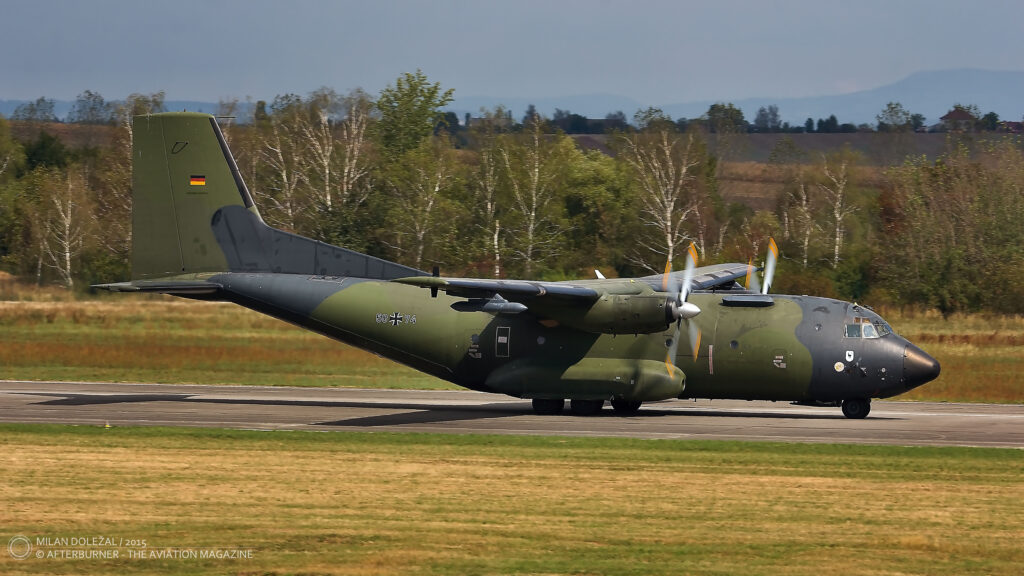
Discussion on the subject of binational cooperation began in the middle of 1958. For a moment it seemed as the new airlifter would be even a joint concept of three countries, as also Italy was interested in participation in that project. Nevertheless, financial aspects of the cooperation raised some concerns in Rome and finally Italy withdrew from that venture.
On 15th December 1958, German and French defence ministers attended a meeting, being supported by President de Gaulle and Chancellor Adenauer. And eventually, both countries officially agreed on the joint transport aircraft programme.
In the next step, onn 28th January 1959, a consortium of companies was established, aimed for successful conclusion of the new Franco-German transport aircraft development. It included four companies, the already mentioned Weserflug, HFB and Nord Aviation, together with a new partner, W. Blume – Leichtbau und Flugtechnik design office. The new entity was named ´Transporter Allianz´, therefore also creating a name for the new aircraft – TransAll. Sud Aviation and Hurel-Dubois were not invited to join the binational consortium.
Reaching an agreement in regards of shape of the new aircraft was both the first and great obstacle to get over. It was caused by completely different expectations the French and German air forces had. The French, still having several colonies and dependencies all over the world, aimed for a twin-engine strategic airlifter, able to perform long-haul flights. Such characteristics was not necessary for the Germans and they preferred a less sophisticated, short-range tactical transport aircraft. Nevertheless, both countries agreed that Short Take-Off and Landing (STOL) capability and possibility to operate from rough runways are essential.
Eventually, an agreement on further developing of the C-40 and AT-150 concepts and merging them together was made. In December of 1959, a pre-order was placed by French and German governments that included construction of three prototypes for dynamic tests and two more for static evaluation. Expenditures for that stage had to be covered in half by both countries.
Following the abovementioned order, the works were launched in the early 1960. The companies from the Transporter Allianz consortium agreed on a following breakdown of development and manufacturing: Nord Aviation took care about wings and engine nacelles, Weserflug was focused on central part of fuselage and horizontal stabilizer, while HFB worked on nose, rear fuselage section and tail. In addition, two British companies also participated in the project. They were Rolls-Royce that supplied its turboprop engines of Tyne series and Normalair-Garrett Limited that delivered hydraulic systems.
On 25th February 1963, at Melun-Villaroche airfield in France, the first prototype of the Franco-German airlifter took-off for its maiden flight. It was followed by the second prototype, that performed its first flight in Lemwerder, Germany, on 25th May of the same year. The third – and last – airworthy prototype built following the pre-order placed in 1959, took-off for the first time on 19th February 1964, from Hamburg-Finkenwerder airport.

And that was the very moment, when the Transall programme, initially launched by political decision, was dangerously close to being abandoned – also because of politics. Although there was no doubt, that there is a need to replace the fleet of Nord 2501 aircraft with new airlifter, it again raised several concerns in both countries. One more time there was a question, if the new Franco-German project was really the best possible solution.
First of all, French colonial ambitions were confronted with results of the First Indochina War and the Algerian War of Independence. Initial assumptions, regarding the number of transport aircraft needed and expected strategic airlifting capability, needed a complete re-assessment. New military budget, adopted after the Algerian War, questioned the possibility of quick and successful closure of expensive aviation programmes, including Transall and Breguet Atlantic.
In 1962, Germany was shaken by a political scandal called ´Spiegel affair´ that caused several changes in government and high military authorities. Ironically, arrival of some fresh faces there caused that a long-forgotten case was brushed up.
A debate arose within the Defence Committee of Bundestag, once again questioning the merit of further involvement in the joint airlifter programme. According to some politicians, there was a better choice and it was called the Lockheed C-130 Hercules. Arguments made against the Transall included that Hercules was a combat-proven aeroplane, available for almost immediate delivery, in contrast to the Franco-German design, still being just a prototype. In addition, there was a possibility to purchase a license for manufacturing the C-130E in Germany.
During 1963 and 1964 it seemed as both countries were doing their best to postpone the Transall programme, waiting for the other one to abandon the project as the first, thus being blamed for its failure. Specialized media slowly began to talk about ´Transall affair´.
Eventually, although after long and feverous discussion, voices of reason prevailed. Firstly, there were considerable costs incurred in relation to launching the Transall programme and building the prototypes. In addition, abandoning that project in such advanced stage could cause a conflict between France and Germany, raising questions about their reliability, as an ally.
Moreover, it was not a perfect timing for taking a decision on acquiring the C-130 Hercules. The first signs of another political affair came over the horizon, and this time it was related to Lockheed F-104 Starfighter. The German state authorities were not only questioned why such fighter was acquired for the Luftwaffe but there was also a suspicion of receiving benefits from Lockheed company and a large-scale corruption.
Although the affair, later known as ´Lockheed scandal´ or ´Starfighter-Affäre´, officially broke out in 1966, symptoms of related tensions have actually shown up much earlier. Imposing a shadow on negotiations for the purchase and license-manufacturing of the C-130.
On 24th September 1964, an order for one hundred and sixty serial-build aircraft was placed, being split in 50 aircraft for the French Air Force and another 110 for Luftwaffe. The C-160 Transall transport aircraft, a result of the joint Franco-German cooperation, became reality.
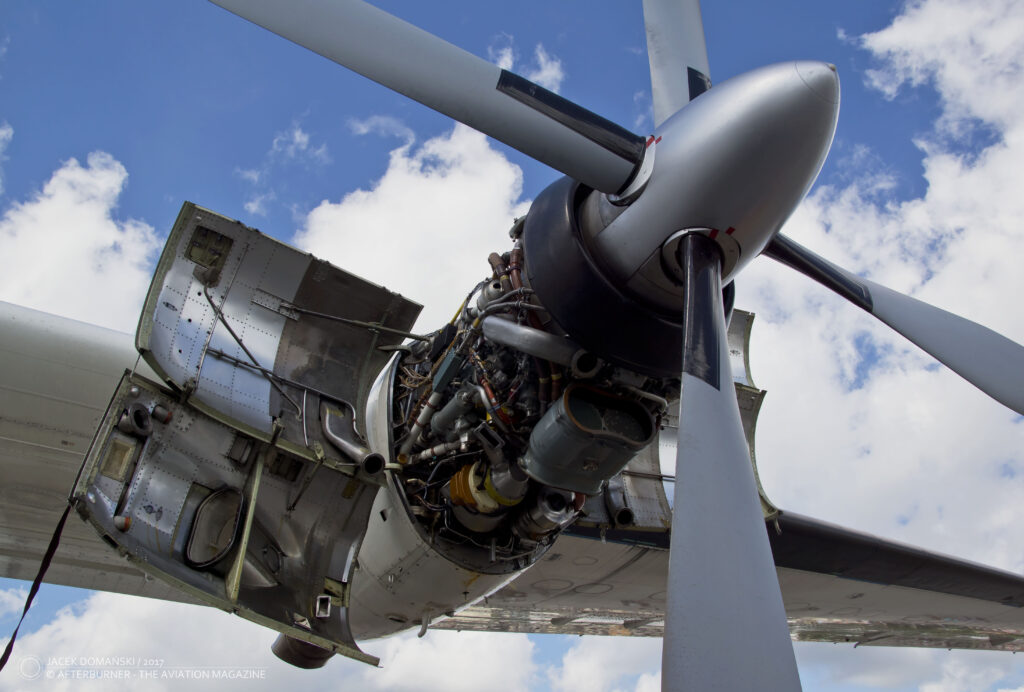
However, before the serial production was launched, a short pre-series of six aircraft was built, designated as C-160A. They were intended for evaluation and training purposes at Centre d’expériences aériennes militaires (CEAM), the main French aeronautical and test centre at Mont-de-Marsan. A binational squadron was established there, equipped with those six pre-serial C-160s that were split between Germany (odd-numbered) and France (even-numbered). In October of 1965, the test flights at CEAM began.
Armée de l’air was the first one to receive a serial-manufactured Transall aeroplane and it was officially handed over on 2nd August 1967. The German Air Force had to wait almost nine more months for its first C-160, as it was delivered on 30th April 1968.
Finally, the first production series had to include 169 aircaft – 50 for France (designated as C-160F), 110 for Germany (C-160D) and additional 9 for the South African Air Force (C-160Z). Nevertheless, military budget cuts in Germany resulted in reduction of the initial order and in renegotiation of the agreement with France. In 1971, twenty C-160 airlifters initially intended and built for the Luftwaffe, were sold to Turkey and received a designation of C-160T.
Basic technical specifications of the new airlifter were crew of 5 or 6 (including up to two loadmasters), load capacity of 16,000 kg or up to 93 troops, range of 1,853 kilometres and service ceiling of 8,230 metres. Possible configurations of its cargo compartment included a medevac for 62 injured or DADA (Dispositif d’Arrimage et de Désarrimage Automatique) automatized loading/unloading system with rails.
The French C-160s were assigned to the 61e Escadre de Transport, with its Escadron de Transport 1/61 Touraine, at Orléans/Bricy, being the first unit to operate the new airlifters. Within the Luftwaffe, Transalls were split between three Air Transport Wings (Lufttransportgeschwader/LTG): 61st at Landsberg/Lech air base, 62nd at Wunstorf and 63rd at Hohn.
Shortly after its introduction, the C-160 earned recognition as a real air transport workhorse. This, together with decades of active usage, resulted in an impressive service record.
The so-called Shaba invasions in Zaire were among the first combat operations when the Transalls of the French Air Force were used. In 1977, the C-160s airlifted Moroccan troops into the war zone, as a part of Shaba I conflict (Operation Verveine). Next year, the French Transall aircraft participated in airborne operation in Zaire, known as the Battle of Kolwezi.
Over the years, the C-160 Transall airlifters supported French troops during their combat missions in Africa, supplied military bases in dependencies, provided logistic support for both armed forces and civil authorities, and participated in several humanitarian operations all over the world. Military engagements in Chad and Mauritania, Cambodian Civil War, the first French participation in ´Red Flag´ exercise in Nevada, visit of ´Normandie-Niemen´ squadron in Russia, logistic support during presidential visit in China, humanitarian aid during floods in Bangladesh, tornado crisis in Martinique, earthquake in Peru, drought in Sahel region, volcano eruptions in Guadeloupe and Réunion – that list is almost endless.
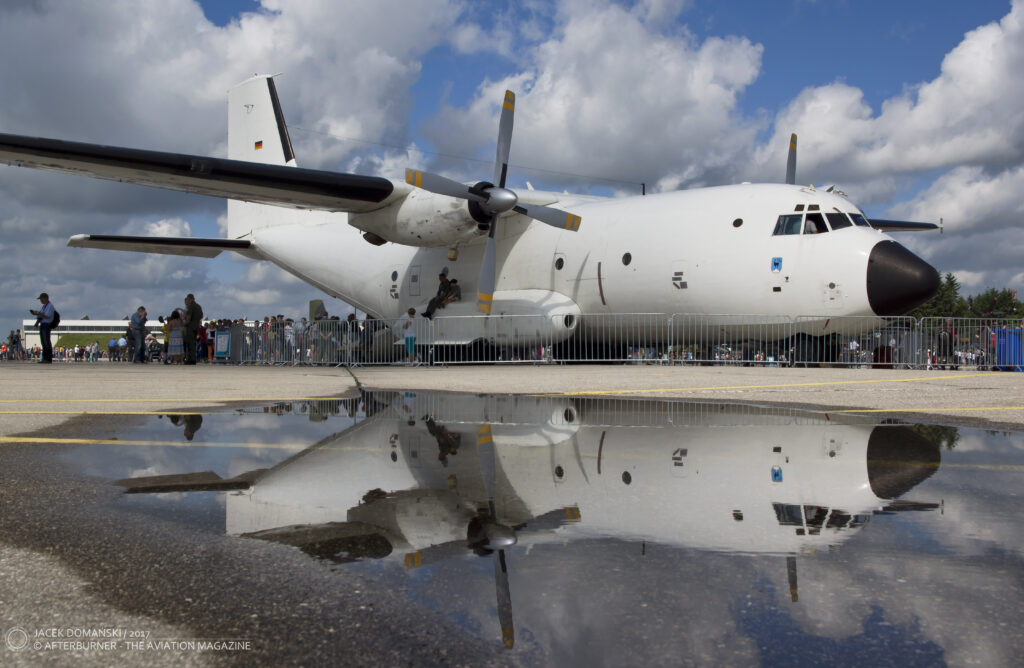
No less impressive is service record of the C-160 aircraft operated by the Luftwaffe. It includes the first post-war international combat engagement of the German armed forces in Somalia, permanent deployment of the Transall fleet within the International Security Assistance Force in Afghanistan, participation in AFISMA and MINUSMA operations in Sahel, intervention in Mali, supporting peacekeepers in Sudan and Nepal, Operation Artemis in Congo, evacuation from Libya (Operation Pegasus). The German C-160s took part in a large number of humanitarian operations, an engagement that gave the Transall its meaningful nickname – Engel der Lüfte (English: Angel of the air). Such missions included fighting with famine in Ethiopia, Ebola-crisis in Sierra Leone, Liberia and Guinea, floods in Mozambique, supplying Sarajevo during war in Bosnia but also fighting with forest fires in Europe.
The South African Air Force widely used its fleet of the C-160 aircraft during the South African Border War (aka Angolan Bush War). A long and mostly asymmetric conflict that lasted in Africa from 1966 to 1990.
In addition to pre-production series and prototypes (C-160 V1 – V3 plus C-160A), and the first serial variants of Transall (D, F, T and Z), several upgrades and modifications were implemented within the following years of their service.
In 1976, the French Air Force made a decision on purchasing additional twenty five examples of C-160 airlifters. For this reason, the Transporter Allianz consortium was reactivated, however with a completely different structure. Weserflug and Focke-Wulf merged in 1969, creating VFW company but the new entity was soon acquired by Messerschmitt-Bölkow-Blohm group, which in the meantime also absorbed HFB. In 1970, Nord Aviation and Sud Aviation merged to create Aérospatiale corporation.
The re-developed and upgraded Transall was designated C-160NG (Nouvelle Generation / New Generation) and performed its maiden flight on 9th April 1981. Modifications done on the original design included additional fuel tanks, aerial refuelling probe and new avionics. Approximately fifteen of the new Transalls were adapted for a role of flying tankers, by adding a removable refuelling kit – they were nicknamed as longue carène (English: long hull). Finally, thirty five of NG aircraft were built – 25 following the initial order of Armée de l’Air, four in customized configuration for the French special forces and another six aircraft of a civil variant for Indonesia.
A few of already existing aircraft were later converted for specialised variants. Between 1981 and 1987, four C-160H Astarté (Avion Station Relais de Transmissions Exceptionnelles – airborne relay station for special transmissions) communications relay aircraft were delivered for the French Air Force. Equipped with hard-to-be-jammed Very Low Frequency communication systems, C-160H Astarté aeroplanes were used to secure communication with submerged French nuclear submarines.
Another specialized French variant of the Transall was an electronic and photo intelligence aircraft, designated C-160G Gabriel, that entered service in 1989. Although still is very little known about this aeroplane, it was equipped with devices for detection and analysis of radar sources and had a signals intelligence (SIGINT) capability. Only two aircraft of G variant were built and both were operated by Escadron électronique aéroporté 1/54 Dunkerque. In 2008 their intelligence equipment was upgraded by Thales company.
In 1989, a modernization programme for the French C-160s was launched. All 68 aircraft of both F and NG versions, being then operated by Armée de l’Air, were upgraded to a new standard and received new designation of C-160R Renové (English: renewed).
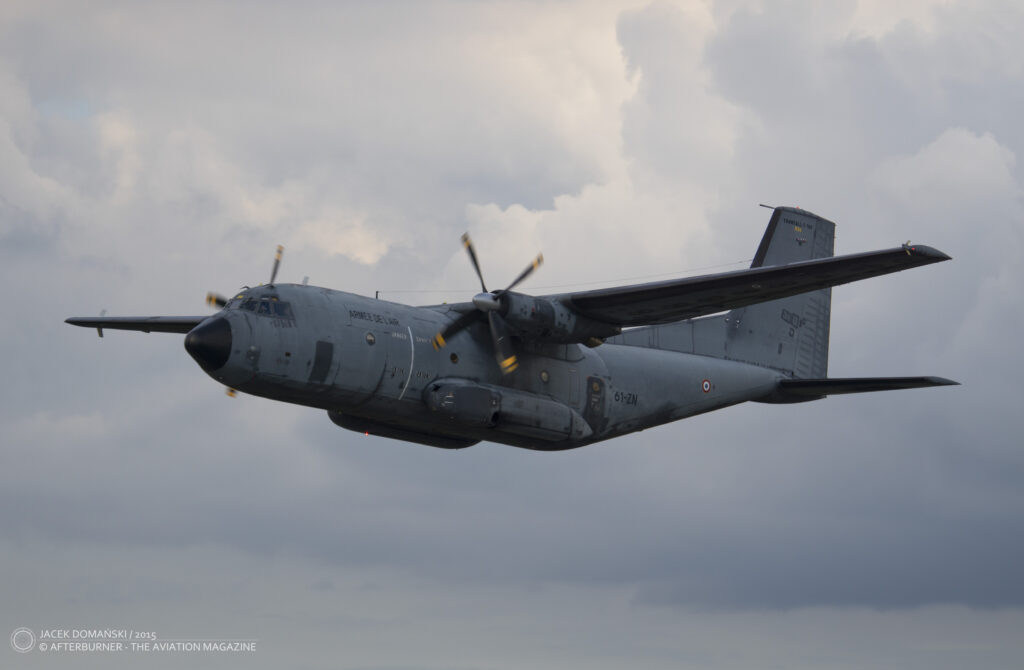
An interesting fact is that, between 1973 and 1985, four of C-160F were converted to airmail transport aeroplanes. They were known as C-160P and were operated by the Aéropostale company, a branch of Air France. The postal variant of Transall was used at Paris – Bastia (Corsica island) route. One aircraft could carry approximately 13.5 tons of cargo, or almost 2 million letters.
Several other prototype variants were also evaluated, but they have never been approved for serial production. They included French C-160ASF platform for AM39 Exocet missile, C-160S and C-160SE surveillance versions and Turkish AC-160CAS, close air support variant.
In addition, there were another two concepts based on the Transall but aimed for a civilian market. The first of them was a C-161 passenger airliner, being merely a conversion of military airlifter into a turboprop passenger aeroplane. The second, more ambitious idea, was a project of C-161J transport aircraft, with significantly increased external dimensions, bigger cargo volume, nose cargo-bay door and cockpit raised above the main fuselage. Nevertheless, both aeroplanes did not go beyond the model stage.
More of fifty years of the Transall active service have also brought a crash record. Although, taking into consideration the number of operations and flying hours clocked by those aeroplanes, the list of accident involving C-160 aircraft is relatively short.
A total of sixteen aircraft was damaged beyond repair and six fatal accidents were reported. The most tragic one occurred on 9th February 1975, involving a German C-160D on route from Hohn air base to Chania airfield in Greece. The aeroplane crashed in the mountains, some 24 kilometres before reaching its destination, as a result of controlled flight into terrain (CFIT) that was caused by both bad weather conditions and navigation error. Regrettably, none of five crew members and thirty two passengers survived the crash.
The second worst Transall accident happened on 11th May 1990 and again involved a German airlifter, flying from Wunstorf to Kaufbeuren air base. Similarly to the above mentioned case, it was another CFIT and the aircraft hit a slope in Spessart mountains. All of ten people on board died on impact.
Ten further C-160 aircraft were lost due to aviation accidents. It includes seven French Transalls, one of the Turkish Air Force and two aeroplanes operated by civilian companies.
No aircraft were lost in combat, although in some missions the Transalls were facing enemy fire. In 1993, a German C-160D was hit by a missile from Strela-2 MANPAD while approaching Sarajevo airport. The load master was seriously injured and right engine damaged. Another example was a French Transall that was hit by an RPG-7 grenade at Abidjan, during Operation Licorne. In both cases, the aircraft have been repaired and returned into service.
Intensive use and long service of both French and German C-160s resulted in several notable accomplishments and many of them were celebrated and honoured by special liveries. In 1987, the fleet of the French Transalls clocked a milestone of 500,000 flying hours. That event was marked by a dedicated livery painted on aircraft with tactical number 61-ME.
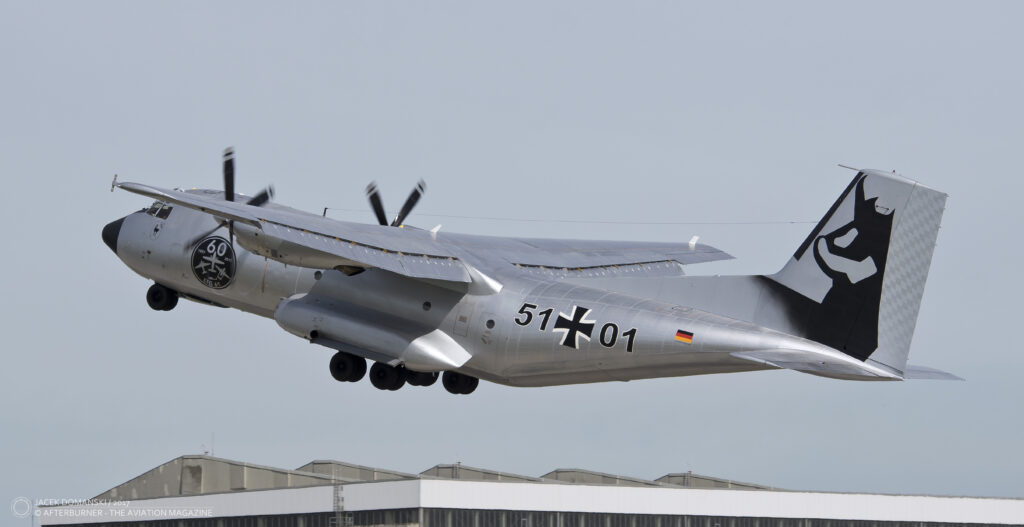
The Transalls assigned to LTG 62 have clocked 500,000 flying hours in 2005. On this opportunity a special marking was painted on the aircraft with tactical number 50+50, in addition celebrating also the 50th anniversary of the Bundeswehr. In 2011, the Luftwaffe announced that its fleet of C-160 aeroplanes has accumulated one million flying hours in total. The symbolic millionth hour was achieved on 4th October, by the Transall 50+06 from Hohn. Eight years later, LTG 63 and Hohn air base celebrated a total of 400,000 flying hours clocked by their C-160s. And again, a special livery was then painted on the aircraft with tactical number 50+72.
Although the C-160 Transall proved its value as versatile and reliable airlifter, at beginning of the 2010s that aircraft was slowly reaching a final stage of its service life.
It should be acknowledged that a programme focused on development of another airlifter, intended to be the C-160 successor, was launched quite early. Already in 1982, a consortium named FIMA was established and included Aérospatiale, British Aerospace, Lockheed and Messerschmitt-Bölkow-Blohm companies. Its goal was to design an aircraft able to replace not only the C-160 but also the C-130 Hercules.
Nevertheless, that development process turned out to be more complex and complicated than expected. In 1989, Lockheed withdraw from the programme, and decided to develop its own project of ´Super Hercules´. Next, Italy and Spain joined the consortium, being followed by Turkey, Belgium and Luxembourg. Finally, the joint airlifter programme was re-named into Euroflag (European Future Large Aircraft Group).
In 1995, the Euroflag joint venture assigned the task of creating the new airlifter to Airbus Military. Soon afterwards Italy abandoned the programme. At this point, there was a requirement for 180 new transport aircraft to be manufactured in total. Additionally, a goal was set to perform a maiden flight in 2008 and start deliveries one year later. In 2005, South Africa joined the project, being followed by Malaysia.
Regrettably, the way to create that new aircraft through a joint international cooperation turned out to be as thorny as ever. There were several delays in development, problems with required characteristics and airlift capabilities, as well as with raising costs. Eventually, A400M Atlas, as the new airlifter was designated, performed its maiden flight only on 11th December 2009 and its introduction into service was postponed to 2013. In the meanwhile, the ageing fleet of Transalls was still on duty, although the number of airworthy aircraft was decreasing year by year.
The first A400M was officially handed over to the French Air Force on 30th September 2013. Later that same year an aircraft for Turkey was delivered and at the end of 2017 both the RAF and the Luftwaffe received their first Atlas airlifters.
The German military authorities have decided to assign all their new A400M aircraft to LTG 62 at Wunstorf air base. It clearly meant that two other air transport wings would be disbanded upon retirement of the Transall fleet that was initially planned for 2018.
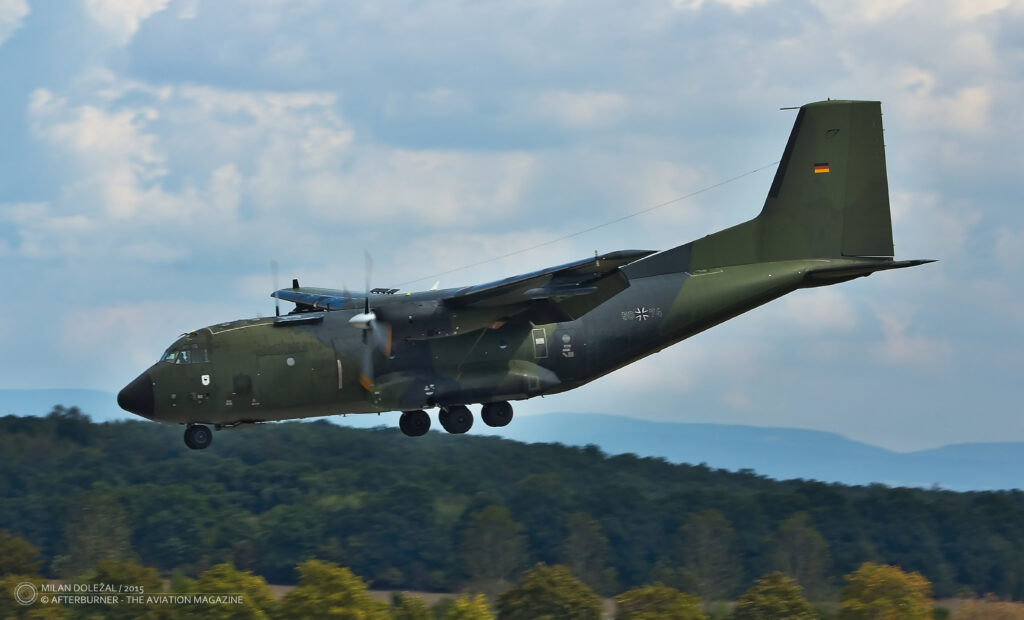
Further delays in the A400M deliveries caused the above mentioned schedule needed to be revised. Due to that, service time of the German C-160s was extended until 2021. Nevertheless, the Luftwaffe proceeded with reorganization of its transport aviation structure.
Lufttransportgeschwader 61 in Landsberg was disbanded yet in 2017, exactly in the year of celebrating its 60th anniversary. In June of that year, there was an open doors event organized at Landsberg/Penzing air base, followed by an official ´fly out´ ceremony held in September. On 31st December 2017, the history of LTG 61 came to its end.
The third Transall-equipped unit, Lufttransportgeschwader 63 in Hohn is scheduled to be disbanded at the end of 2021. At this moment, that unit flies the C-160 Transall being officially recognized as the last one in German operational service – painted in a special livery and nicknamed ´Retro-Brummel´. During this year, that aircraft participated in a series of farewell events that included flypasts over several military bases and airfields thorough Germany. The final flight within the ´Transall farewell tour´ was scheduled for last decade of August and was performed over south-eastern part of the country.
France began to reduce its Transall fleet already in 2012. And, similarly as forty five years ago, the first example of the new airlifter – but this time an Airbus A400M Atlas – was received by Escadron de Transport 1/61 Touraine. A small number of C-160s is still operational within the French Air Force, due to delayed deliveries of Atlas aircraft. If the initial schedule will be followed, Armée de l’Air et de l’Espace should receive its 5th and 6th A400M this year and three more in 2022. That will definitely mark the end of Transall era in the French Air Force.
According to the 2021 edition of ´World Air Force´ directory, the Turkish Air Force still have one C-160 Transall in active service. It´s the aircraft that was upgraded into ELINT/SIGINT variant. The South African Air Force has retired all of its C-160Z yet in 1993.
Pretty soon, the C-160 Transall will disappear from the sky for ever, together with its characteristic sound of Rolls-Royce Tyne engines – that earned the aircraft a nickname of ´Brummel Biene´ (English: mumbling bee). Nevertheless, the ´Trall´ will not be completely forgotten as several aircraft are already preserved in aviation museums or became an air base gate guards. They will be there to remind that interesting story of initially unwanted aeroplane that finally turned out to be a backbone of airlifting in two NATO countries for over fifty years.
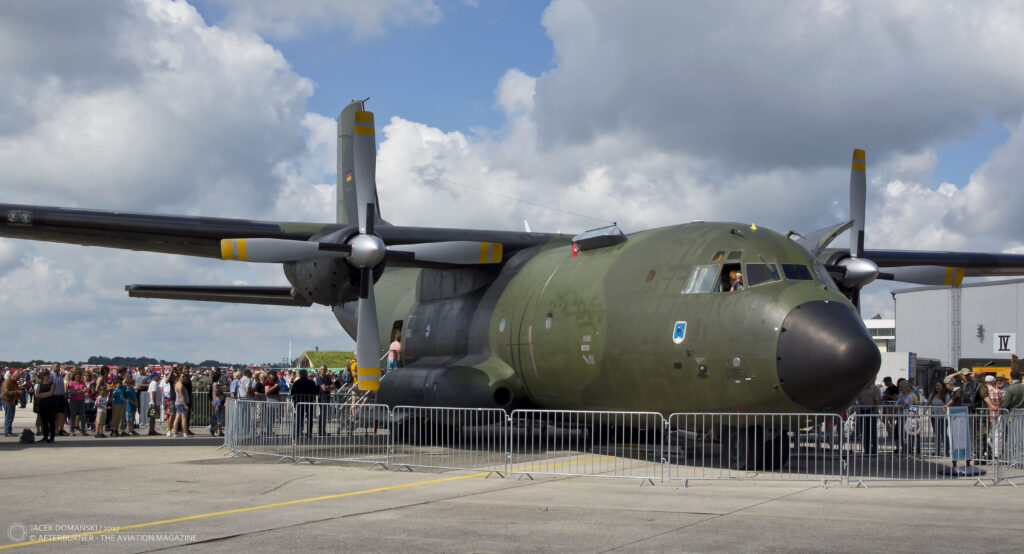
Sources:
- C-160 Transall – De 1967 à nos jours (Les matériels de l’armée de l’air 07), Histoire & Collections, by Frédéric Lert
- Un demi-siècle d´aéronautique en France, COMAERO (Comite pour l´historie de l´aeronautique les avions militaires), part one, by Jacques Bonnet and Alexis Hamel
- Transall, Motorbuch-Verlag, by Gerhard Lang

